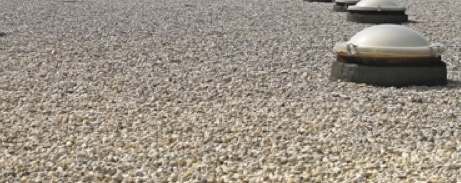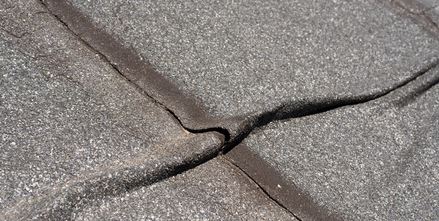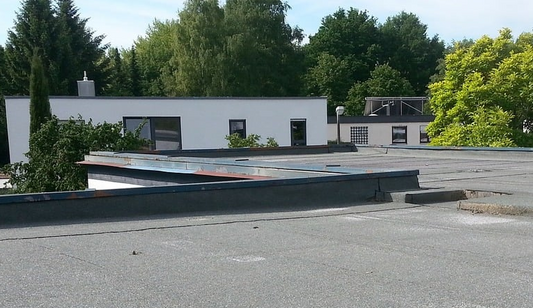When you're installing PVC single-ply roofing, even small mistakes can lead to costly repairs and premature system failure. You'll find that proper installation requires attention to multiple critical factors, from membrane overlap and seam welding to substrate preparation and fastening patterns. While these systems offer excellent durability and weather resistance when installed correctly, knowing the common pitfalls—and how to avoid them—will help guarantee your roof performs as intended.
Key Points
- Insufficient membrane overlap during installation can compromise watertightness - maintain minimum 75mm for mechanically attached systems and 50mm for adhered applications.
- Poor temperature control during heat welding leads to weak seams - maintain 900-1100°F and perform test welds before main installation.
- Inadequate substrate preparation causes adhesion failures - thoroughly clean surfaces and remove debris before installing the membrane.
- Incorrect fastening patterns compromise roof integrity - follow manufacturer specifications for proper spacing and avoid over-driving fasteners.
- Improper flashing installation at penetrations and corners creates leak points - ensure complete sealing and adequate overlap at critical details.
Insufficient Membrane Overlap and Seam Issues
When installing PVC roofing membranes, maintaining proper overlap dimensions and seam integrity is vital for preventing water infiltration.
You'll need to guarantee a minimum overlap of 75mm for mechanically attached systems and 50mm for fully adhered applications.
Don't rush the welding process - proper heat settings and consistent pressure are essential for creating watertight seams.
Check that seam areas are clean, dry, and free of debris before welding.
You should also avoid stretching or wrinkling the membrane during installation, as this can compromise seam strength.
Test your seams daily using a probe or pull test to verify proper fusion.
If you discover any gaps or weak spots, you'll need to patch or reweld them immediately to maintain the roof's waterproof integrity.
Temperature Control During Heat Welding
Because PVC welding temperature directly affects seam quality, you'll need to maintain precise heat control throughout the installation process.
The ideal welding temperature typically ranges between 900°F and 1100°F, but you'll want to test a sample seam first to determine the best setting for your specific conditions.
Don't assume one temperature works for all situations. Wind, ambient temperature, and membrane thickness can all affect your welding results.
You'll need to adjust your heat welder's settings as weather conditions change throughout the day. If your temperature's too low, you won't achieve proper fusion. If it's too high, you'll scorch or damage the membrane.
Always perform a pull test on your test seams before proceeding with the main installation to guarantee proper weld strength.
Improper Substrate Preparation and Cleaning
Successful PVC roofing installation depends heavily on proper substrate preparation and cleaning. You'll need to remove all debris, dirt, and old roofing materials from the substrate surface.
Any loose fasteners, nails, or metal pieces must be extracted and holes properly filled. Don't skip checking for moisture, as trapped water can lead to membrane blistering and adhesion failures.
Before membrane installation, you should sweep or vacuum the entire surface thoroughly. It's critical to address any ponding areas, uneven spots, or structural defects in the substrate.
Make sure you're using manufacturer-approved cleaning solutions to remove oils, greases, or chemical residues that could compromise adhesion. If you're working with a concrete substrate, it must be fully cured and free of release agents or curing compounds.

Fastening Pattern and Attachment Errors
After ensuring proper substrate preparation, correct fastening patterns and attachment methods become the next major focus.
You'll need to follow manufacturer specifications for fastener spacing, as incorrect patterns can lead to membrane billowing, punctures, and roof failure.
Don't make the mistake of using too few fasteners or placing them too far apart, especially in corner and perimeter zones where wind uplift forces are strongest.
You should also avoid over-driving fasteners, which can damage the plates or create dimples in the membrane.
Make sure you're using the right type of fasteners for your deck material - what works for steel decking won't necessarily work for wood or concrete.
Check that your seam welds align properly with fastener rows and maintain consistent overlap widths to prevent potential weak points in the system.
Flashing and Detail Work Mistakes
While proper fastening is essential, detail work around penetrations and changes often proves to be the most challenging aspect of PVC roofing installation.
You'll need to pay close attention to corners, pipes, drains, and other penetrations where water intrusion commonly occurs.
Don't skip critical steps like proper membrane preparation, primer application, and complete heat welding of all flashings.
You're likely to encounter problems if you rush through inside and outside corner details or fail to properly terminate the membrane at walls and curbs.
Make sure you're using compatible materials and following manufacturer-approved details for each specific connection.
Watch for common errors like incomplete sealing around pipe boots, improper overlap at termination bars, and inadequate height for base flashings.
These mistakes can lead to immediate leaks and premature roof failure.

Chemical Compatibility and Material Storage
Because PVC roofing materials can react adversely with certain chemicals and substances, you'll need to confirm compatibility with any adjacent materials, cleaners, or adhesives used during installation.
Store your materials properly and handle them with care to prevent damage or contamination.
When working with PVC roofing materials, follow these essential storage guidelines:
- Keep rolls in a clean, dry area away from direct sunlight and maintain temperatures between 4°C and 32°C to prevent membrane degradation and confirm proper weldability.
- Don't store PVC materials near petroleum products, solvents, or other chemicals that could compromise the membrane's integrity.
- Stack materials on proper pallets or platforms, never directly on the ground, and cover them with breathable tarps to protect from moisture while allowing air circulation.
Edge Termination and Perimeter Securing
Since proper edge termination and perimeter securing are critical to prevent wind uplift damage, you'll need to pay special attention to these vulnerable areas during PVC roofing installation.
Make certain you're following manufacturer specifications for edge metal fastening patterns and always use approved termination bars or metal flashings.
Don't skip mechanical attachment at the perimeter, as it's essential for the roof system's integrity.
You'll want to secure the membrane at walls, curbs, and penetrations using appropriate fasteners spaced according to wind uplift requirements.
Install water cut-off mastic behind termination bars and seal all exposed edges.
Remember to properly clean and prime surfaces before applying sealants, and guarantee you're creating a continuous, watertight seal around the roof's entire perimeter.
Rounding Up
You'll find that successful PVC single-ply roofing installation comes down to attention to detail and following manufacturer guidelines. By avoiding these common mistakes in membrane overlap, heat welding, substrate prep, and fastening patterns, you're setting yourself up for a watertight, long-lasting roof system. Don't forget to double-check your chemical compatibility and edge terminations—they're critical to your roof's performance.




